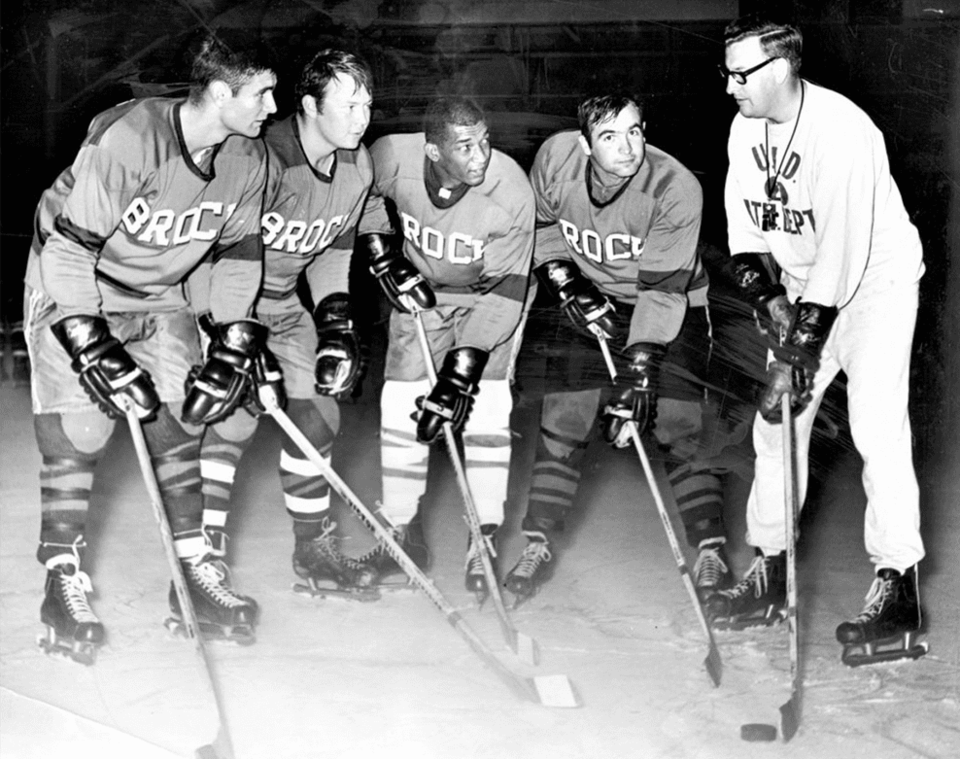Few now recall Ontario’s first all-Black hockey team
Donna Ford’s father, Richard Nicholson, never spoke of having ambitions to play in the National Hockey League. But she thinks he probably dreamed about it.
Nicholson, who died 25 years ago, was a member of the St. Catharines Orioles, the first Black hockey team in Ontario. He, and many other members of the team, were descendants of Adam Nicholson, a prominent member of the Black community in St. Catharines, who settled in Niagara around 1850 after escaping slavery in Virginia via the Underground Railroad.
“The Underground Railroad brought former slaves to Niagara from all over the US. Many put down roots here, like my great grandfather, Adam, who settled in McNabb, in an area that’s still farmland today in Niagara-on-the-Lake,” said Ford. “They found work, and got paid for the first time in their lives. They could now afford to buy homes, and that's what they did.”
The hockey team was sponsored in 1932 by three white businessmen: local quarry operator Ben Walker, H.G. “Touch” Wood (owner of Dominion-Consolidated Transport), and florist Wally Walker. The Black men who composed the team were members of the Salem Chapel - British Methodist Episcopal Church in St. Catharines, long associated with slavery abolitionist and political activist Harriet Tubman.
Competing in the Niagara District Hockey League against white teams from Fonthill, Jordan, Niagara-on-the-Lake, Port Weller, Thorold, and Welland, many of the games were played outdoors, including inside the locks of the Welland Canal.
The Orioles wore orange sweaters with black stripes on the arms and the letters “TST” stitched across the chest for Toronto-St. Catharines Transport, the name of Woods’ trucking company. In fact, the team name was eventually changed to the “St. Catharines Transports.”
And yes, they faced prejudice on the ice.
Some opponents actually refused to play against them. A 2016 Sportsnet article quoted journalist Bill Humber, who wrote about the Orioles in his book, A Sporting Chance: Achievements of African-Canadian Athletes. Humber noted that, “You can make as strong a case that [Canadians] were open-minded and liberal as you can make that we were close-minded and racist. Both arguments can be made if you look at the entire history of the Black athlete in Canada.”
The Orioles were mostly ignored by the press of the 1930s, and on the rare occasion they garnered attention, they were presented as something of a novelty. After the team disbanded in the early 1940s, the players’ families remained a close-knit group in St. Catharines, still attending church and raising their kids together.
Ford remembers when former St. Catharines Standard sports editor Jack Gatecliff wrote about the Orioles, and ran a picture of the 1937 team. “He referred to them in the headline as, ‘Canada’s only all-Black ice hockey team,’ which was incorrect, because there was a whole league of Black teams in Nova Scotia,” said Ford.
(The Colored Hockey League was founded in Nova Scotia in 1895, and some 400 players were involved in the all-Black league over its three-decade existence.)
“Jack changed the headline when the error was pointed out,” said Ford.
As time passed, Ford, who resides in St. Catharines, found fewer references to the Orioles in the media. That all changed when a young Brock University student, Lauren Wilks, knocked on Ford’s door five years ago, and ended up producing the most thorough research of the team as part of her 2018 master’s thesis entitled, “Presenting the Orioles: A Historiographical Analysis of Black Hockey History in St. Catharines.”
Wilks’ dissertation documented how the history of the Orioles has been “overlooked, erased, and ignored.” She maintained that “the erasure is indicative of broader sociological issues of race and racism, as the historic exclusion and (non)remembering of non-white athletes contributes to our understanding of sport history in the present. By neglecting to include athletes of colour in the mainstream history of sport, sports historians are contributing to the whitewashing of Canadian sport history.”
Another descendant of Adam Nicholson, Mike Nicholson, played for the Brock University ice hockey team in 1968 (then known as the Generals in the pre-Badger days) and was named captain a decade after NHL trailblazer Willie O’Ree broke the colour barrier with the Boston Bruins. Nicholson’s father, Hope, captained the St. Catharines Orioles in the late 1930s.

An article in Brock News quoted the team’s coach at the time, Ed Davis, as saying “a Black hockey player with a captain’s ‘C’ on his chest was unheard of, but it was a natural decision to make Mike captain because of the quality of man he was. He was a gentleman on and off the ice. We were proud that he was the face of the team.”
Nicholson played a few seasons professionally for the Erie, PA Lions after graduating from Brock, then returned to Canada and attended the faculty of education at the University of Toronto. He enjoyed a 40-year career teaching English, and credits Brock for putting him on the road to success.
The Badgers honour Nicholson with a sportsmanship award in his name at the annual Brock athletic banquet.


